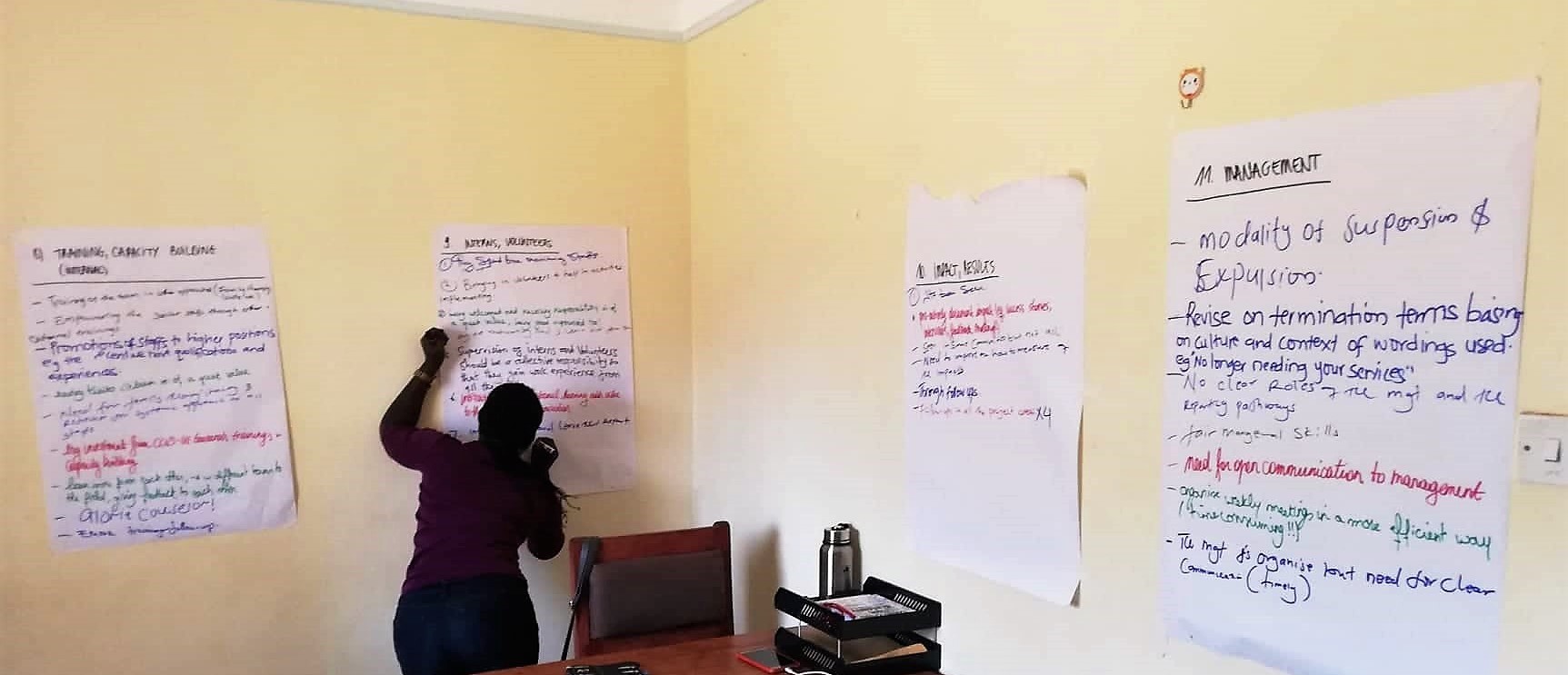RESETTLEMENT OF WAR-AFFECTED COMMUNITIES IN NORTHERN UGANDA AND THE LONGITUDINAL FOLLOW-UP OF THE REINTEGRATION PROCESS OF FORMER CHILD SOLDIERS
Country
Uganda
01/12/2009 - 01/12/2017
Department of Peace Building, Belgian Federal Public Service Foreign Affairs, Foreign Trade and Development Cooperation
Since 2006, Northern Uganda could start its long process of rebuilding after more than 20 years of fighting. In this project we want to gain more inside into how civilians are coping with this transition and how they are trying to build up their families and communities again. Different groups of vulnerable people remain and especially one group – child soldiers – has received a lot of attention, both in the academic world and in popular media. However, little attention is given to how these youth are doing at the moment and how their reintegration process continues on the long term. In this project we both focus on the experiences of community members and child soldiers and how they are struggling to continue with their lives.
Social context
Northern Uganda has recently been suffering from a cruel war in which the rebel group the Lord’s Resistance Army (LRA) terrorized the region for 20 years. The LRA has been looting villages, mutilating and killing civilians, and abducting children and adults. It’s estimated they have been forcefully recruiting 24,000 to 66,000 children. In an attempt to protect civilians, the government forced them to live in Internal Displaced People (IDP) camps for years under very difficult living conditions (many diseases, lack of food and drinkable water,…). Since the cessation of fighting in 2006, northern Uganda started its long way to recovery. But where do you start from after 20 years? Most villages and houses were destroyed, the economy had collapsed and civilians had been and were still depending on food aid for their survival. At that time, most civilians were still living in IDP or satellite camps under extreme poverty and cases of violence were rampant. Nowadays nearly all people have returned to their original homeland and are trying to rebuild their homes, family life and community. However, this rebuilding is complicated because of several reasons. First, there are many practical constraints such as a lack of boreholes for safe and clean water, schools, hospitals or health centres amongst others. Furthermore, the war has eroded the traditional way of living of the Acholi people in the north and the cultural values they considered as important. Cases of sexual gender-based violence (SGBV) are common, moreover civilians show a lot of mistrust and jealousy amongst each other and several of them are still traumatized as a consequence of war.
OBJECTIVES
The aim of this PhD research is twofold. First, we want to gain more insight into the discourses civilians living in local communities in Northern Uganda narrate about the war: How did their life look like at that time and how have they experienced the war? However, more important is how communities are doing nowadays. How did their life change after the war and how are they trying to rebuild their lives and community after being displaced for many years? Special attention will be paid to the different vulnerable groups of people in the community like disabled people, orphans and former child soldiers. Second, we focus specifically on the reintegration process of former child soldiers. We want to learn more about how community members are talking about them and how these narratives are interwoven with the life stories of former child soldiers themselves.
We aim to conduct a longitudinal follow-up of all participants for a period of three years, to see how peoples’ lives, their experiences and perceptions are changing over time.
We aim to conduct a longitudinal follow-up of all participants for a period of three years, to see how peoples’ lives, their experiences and perceptions are changing over time.
PROJECT DESCRIPTION
For this project we selected two different villages in Gulu, one of the districts in northern Uganda most affected by the war. We selected different villages as the way people are living there is quite different. Many people fled to town during the war in order to seek protection when the LRA intensified its attacks. Therefore we selected one village close to Gulu town (about 5 km). This village is currently in transition as many people are leaving or planning to leave – and return to their original homeland – in the years to come. However, especially youth are used to life in town and don’t like the idea of returning to their original villages where there are much less facilities compared to town. The second village is further away from town (about 30km) and described by civilians as ‘the real village’ because they are trying to live as they were before the LRA disturbed their life. In both places, in-depth interviews are conducted with different community members, such as youth, elders, teachers and (religious) leaders to gain insight in their war experiences and how they live together with former child soldiers. Moreover, in-depth interviews with former child soldiers and their family members (husband/wife, parents, brothers/sisters) are conducted to gain a deeper understanding of the experiences they have been through, their current living situation, how they experience their reintegration process and how they talk about themselves. Much research has been done on this theme, but little is known about how their reintegration evolves over time. Therefore we aim to follow-up our participants for a period of three years.
